4 Signs It’s Time to Consider a Security System Upgrade
 Is your security system equipped to help you monitor your property on a 24/7 basis? If you are fortunate enough that your facility still has the same security needs as when you initially installed your security system, and that system hasn’t been rendered obsolete in recent years, it could still cause issues in the future.
Is your security system equipped to help you monitor your property on a 24/7 basis? If you are fortunate enough that your facility still has the same security needs as when you initially installed your security system, and that system hasn’t been rendered obsolete in recent years, it could still cause issues in the future.
Consider your computer— a five year old PC is likely to experience issues such as freezing, crashing programs, or slow operation. Your business’s security system can develop similar issues over time, and if your system experiences a major error and needs to be rebooted, your property may be left defenseless.
Security technicians may be able to help maintain older systems, yet there may come a time when it is more cost effective to invest in a full system upgrade.
Older security systems are tied to a variety of issues that prevent property owners from efficiently securing the building; however, modern security systems offer exclusive benefits and new features. Security technology has developed exponentially in the past decade, enabling users to add more effective features like access control, HD security cameras, automated alerts and schedules and other remote monitoring features.
Installing a new system that incorporates these features will bring efficiency to security management, helping to increase productivity and improve your bottom line.
Remember: your business security system isn’t a “set it and forget it” tool; rather, it’s crucial to keep up with routine maintenance and stay up to date on the latest trends and innovations.
This post examines four factors that signal it may be time to begin researching a security system upgrade.

Your Security Camera System Can’t Accommodate Change
Older security camera systems were not built to accommodate change. If you find yourself struggling to try and make angles or shots work for your surveillance needs instead of adding additional devices, it may be time to upgrade your basic system. Modern IP based system hooked up to commercial grade servers can allow you to expand as your needs grow to add cameras and additional monitoring devices.
Alarm System Doesn’t Allow for Remote Control
As we mentioned earlier, security technology is rapidly evolving: products that were considered “top-of-the-line” five years ago are now obsolete. If you purchased a hard-wired alarm system years ago, you may not be able to control it remotely, meaning that it doesn’t have access or sensors for the locks, leaving your property vulnerable.
Large security software and hardware manufacturers continuously release updates that are designed to make the system more efficient and burglar proof.
Smart locks are a great modern tool to improve security, as users can access them remotely without the use of a key. Smart locks work even when the power is out and they cannot be jammed
Property Features Low-Resolution Security Cameras
Camera quality is imperative for efficient property surveillance, making the difference between catching the criminals and losing all the evidence. Many property owners initially install security cameras to recognize and deter potential criminals, so if you have a low-resolution camera that produces grainy images, you’re sabotaging your chances of apprehending the criminals.
High-definition video quality isn’t just important for your home entertainment system: the same technology comes is incredibly useful for surveillance. With the availability of the high-resolution cameras, there’s little you reason to hold on to your old system.
Surveillance System Is Lacking Remote Monitoring Capabilities
In recent years smart phones and tablets have advanced to be able to track your workouts, diet, and finances, so why shouldn’t you be able to track your building’s security as well? Having a video management system that you can access and control remotely not only reduces response times in the event of a break-in but also helps to eliminate the need for around-the-clock security officers.
From an operations standpoint, having 24/7 access to view your business allows you to plan around weather conditions, monitor traffic patterns, and assess employee efficiency. Frankly, not having that option puts your business at a disadvantage in the competitive marketplace.

Is your building’s security hinged on outdated security technology? Schedule a no-cost property evaluation and we’ll assess how an updated system can improve your property’s security.
 We pride ourselves on providing invaluable services to HOAs/COAs and their property managers throughout S. Florida that facilitate the improvement of safety and appearance of their communities while preserving the integrity of property values. Our first division, Garing Parking Enforcement, was started in 2007 to help communities regain and maintain compliance with their vehicle restrictions and parking regulations.
We pride ourselves on providing invaluable services to HOAs/COAs and their property managers throughout S. Florida that facilitate the improvement of safety and appearance of their communities while preserving the integrity of property values. Our first division, Garing Parking Enforcement, was started in 2007 to help communities regain and maintain compliance with their vehicle restrictions and parking regulations.
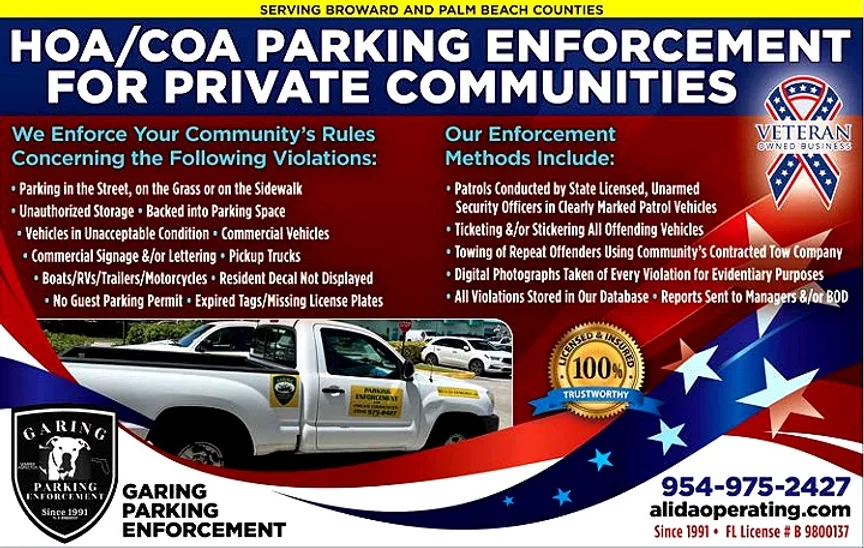
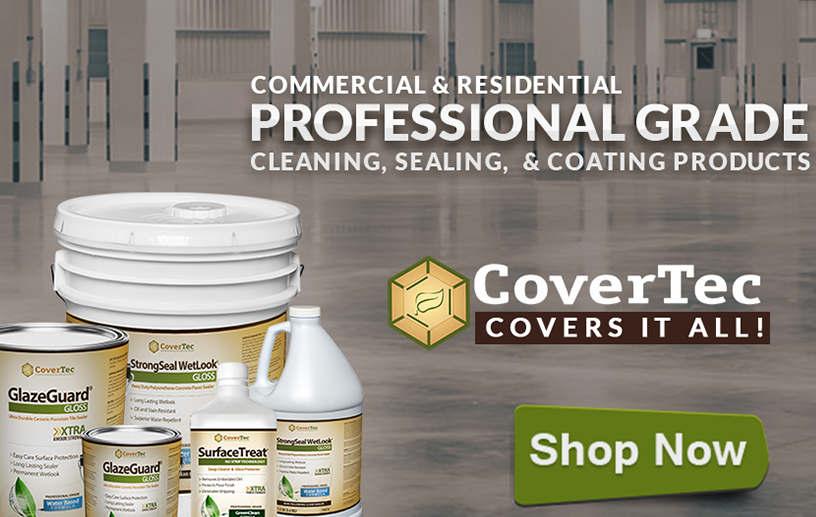


















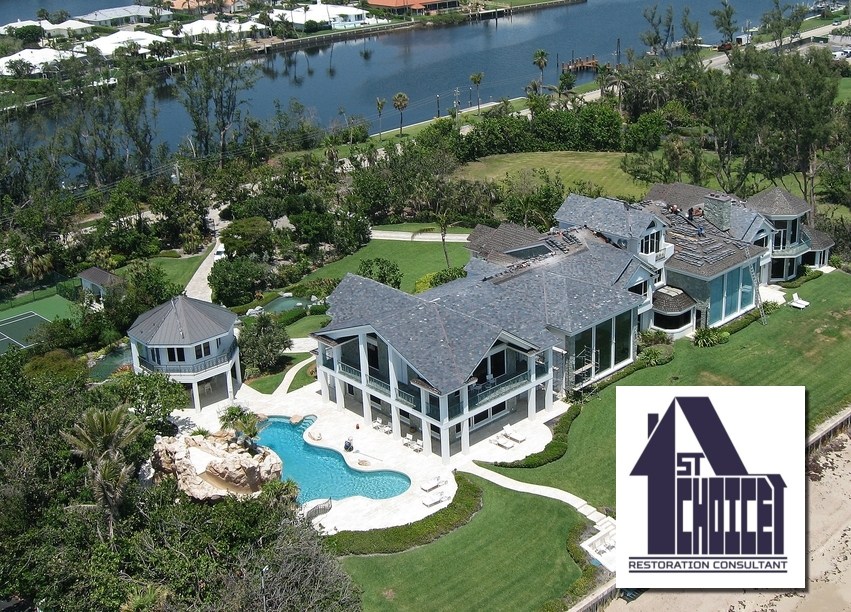

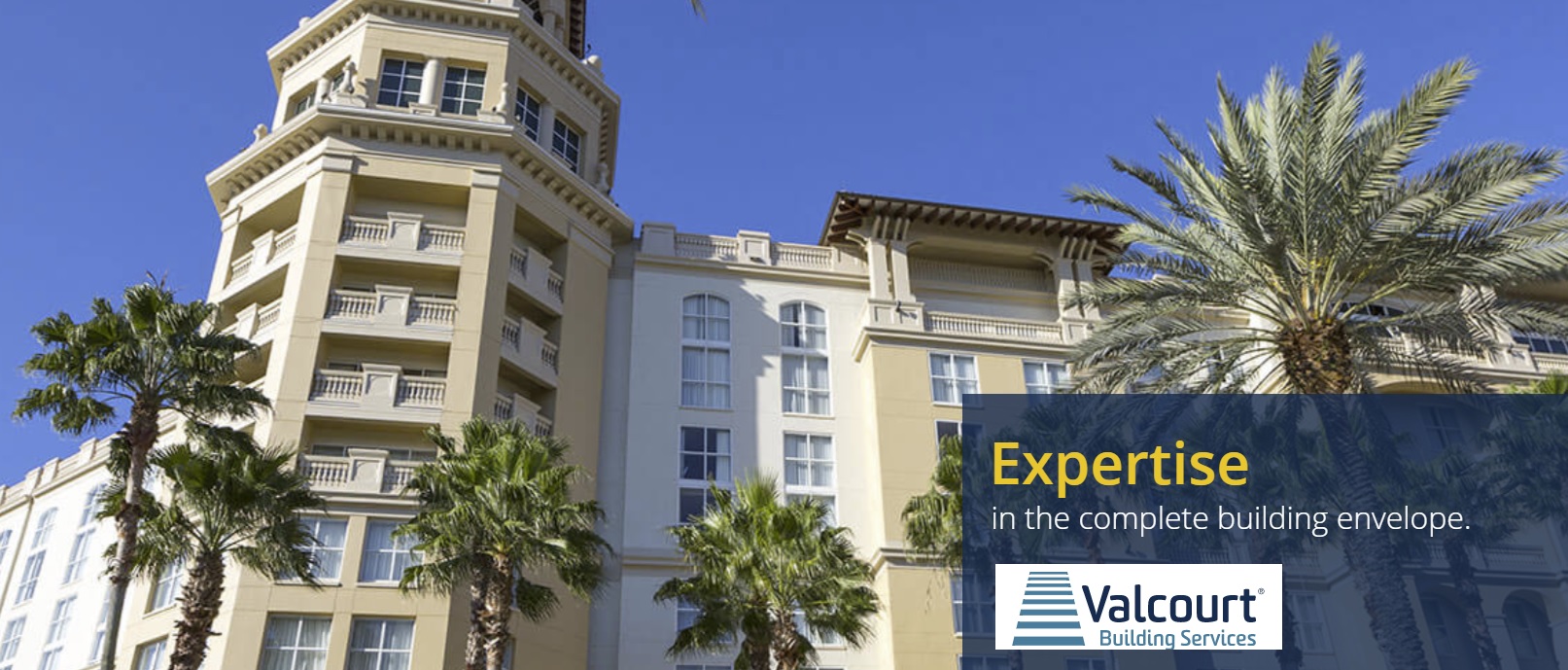
 We are Valcourt Building Services, the premier provider for waterproofing, window cleaning, and restoration services. With over 30 years of experience, we’ve performed tens of thousands of repairs and maintenance on the complete
We are Valcourt Building Services, the premier provider for waterproofing, window cleaning, and restoration services. With over 30 years of experience, we’ve performed tens of thousands of repairs and maintenance on the complete  building envelope. So no matter what your building requires, we have the knowledge and expertise for all of your exterior maintenance needs.
building envelope. So no matter what your building requires, we have the knowledge and expertise for all of your exterior maintenance needs. If you have a commercial property in the Florida/Southeast US market, Valcourt is the premier provider for all your restoration needs. As a specialty contractor that has been waterproofing and restoring commercial building exteriors for over 30 years, we know the issues inside and out.
If you have a commercial property in the Florida/Southeast US market, Valcourt is the premier provider for all your restoration needs. As a specialty contractor that has been waterproofing and restoring commercial building exteriors for over 30 years, we know the issues inside and out.
 Is your security system equipped to help you monitor your property on a 24/7 basis? If you are fortunate enough that your facility still has the same security needs as when you initially installed your security system, and that system hasn’t been rendered obsolete in recent years, it could still cause issues in the future.
Is your security system equipped to help you monitor your property on a 24/7 basis? If you are fortunate enough that your facility still has the same security needs as when you initially installed your security system, and that system hasn’t been rendered obsolete in recent years, it could still cause issues in the future.




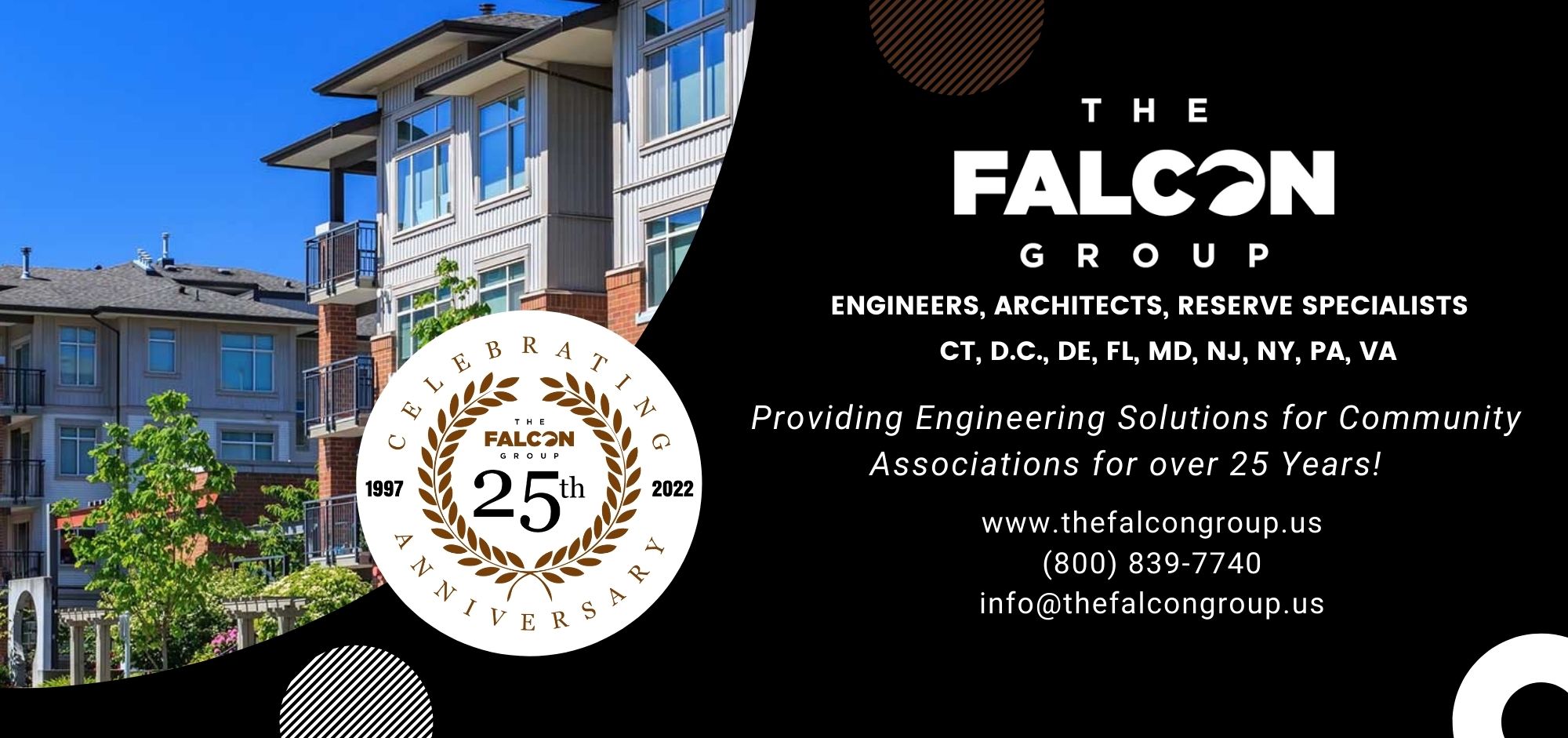
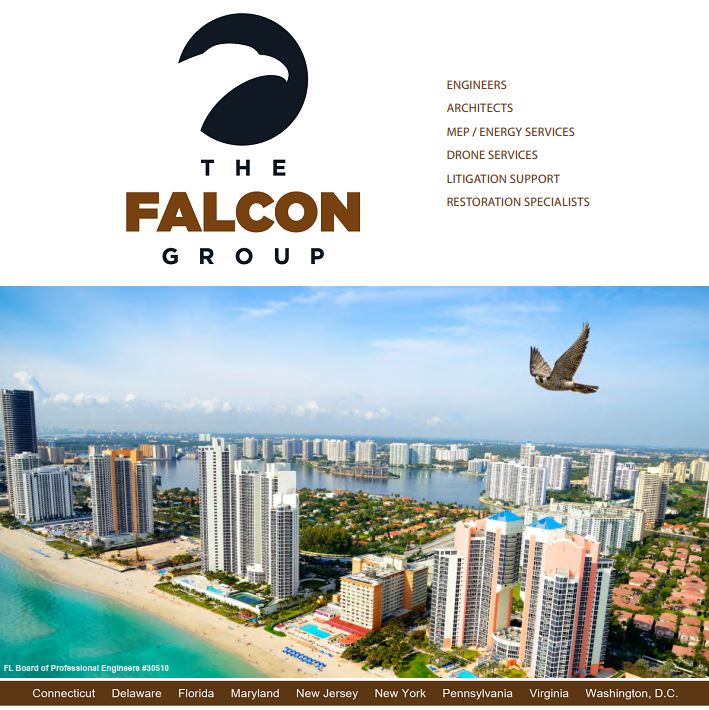
 Engineers • Architects • Drone Services • Capital Reserve Specialists • Energy Consultants • Litigation Experts
Engineers • Architects • Drone Services • Capital Reserve Specialists • Energy Consultants • Litigation Experts
